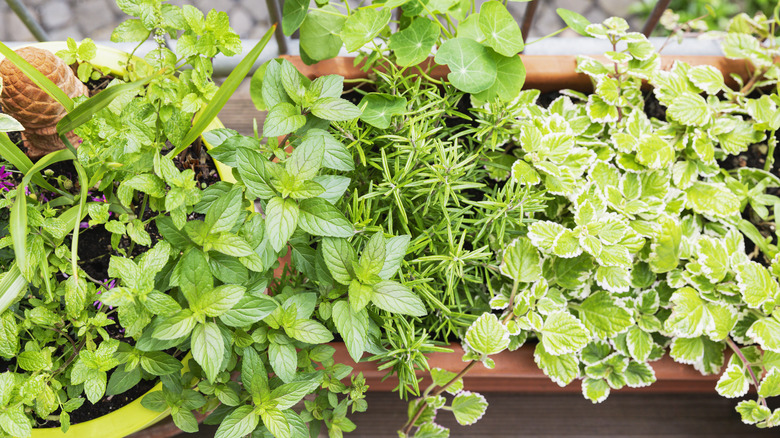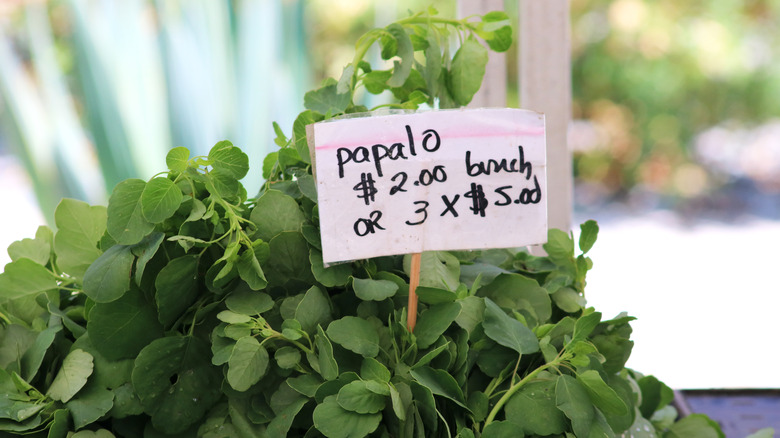The Unique Mexican Herb You Need To Add To Your Next Chicken Sandwich
Imagine a fern green herb that looks remarkably similar to cilantro and features soft curves at the edges of its leaves: That's papalo. Papalo, meaning "butterfly" in Nahuatl, is most easily recognized in its broadleaf form. It also has a narrowleaf variation with thin stems instead of leaves. Frequently sourced from home growers by people and grocery stores alike, papalo is a common ingredient in central Mexican dishes due to its unique flavor that is comparable to cilantro, arugula, citrus, and mint.
The lively flavors of papalo add another layer of complexity to the food it is added to, which is why papalo is often added to sides like beans or main dishes like tacos or quesadillas. Papalo is a great garnish to rich, fatty cuts of beef and pork, and cuts through that richness with its freshness. Chicken pairs especially well with the herb because its naturally bland taste allows for the bold flavor of papalo to take center stage. Adding the fresh herb for a burst of color and flavor on a fried or roast chicken sandwich is a must-try.
More to know about papalo
When hearing "papalo," the quickest thing that comes to mind is a cemita, a Mexican sandwich especially popular in Puebla, Mexico, but sometimes sold at vendors in larger metropolitan areas. Papalo is most flavorful when consumed raw, so be sure not to make the mistake everyone makes when cooking with herbs: adding it into the cooking process.
Papalo is difficult to store and transport long distances because exposure to the cold can cause it to blacken. Consequently, papalo is far from ubiquitous, even though it is grown from South America to the American Southwest. Only recently is familiarity with papalo starting to spread from areas, like Puebla, where it is popular. If you are on the hunt for papalo, it is helpful to know that it is also known as papaloquelite, Bolivian coriander, mampuitu, yerba porosa, cravo-de-uruba, and summer cilantro.
If you are like Ina Garten and just can't deal with certain herbs, it is time to give papalo a try. Papalo is in season from late spring to fall, and if you get your hands on this herb, proceed with caution because, similarly to cilantro, papalo can taste like soap to some. Do not be deterred by any small spots on the leaves. The spots are actually oil glands that produce papalo's the strong scent and unique flavor.

